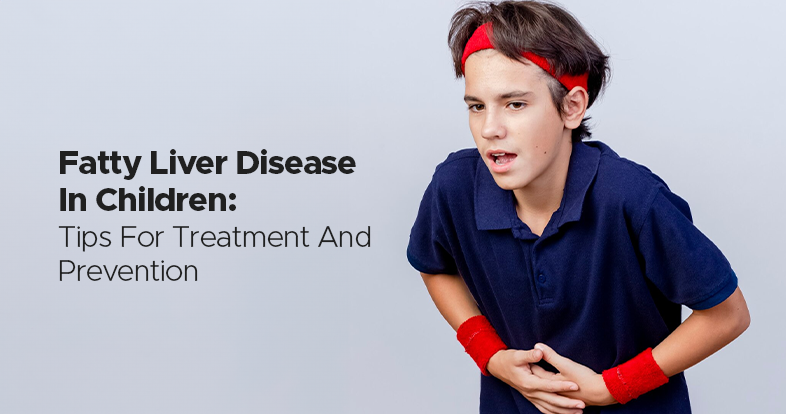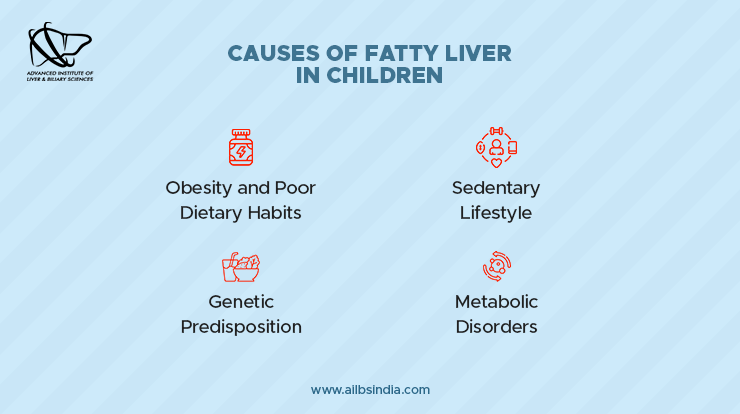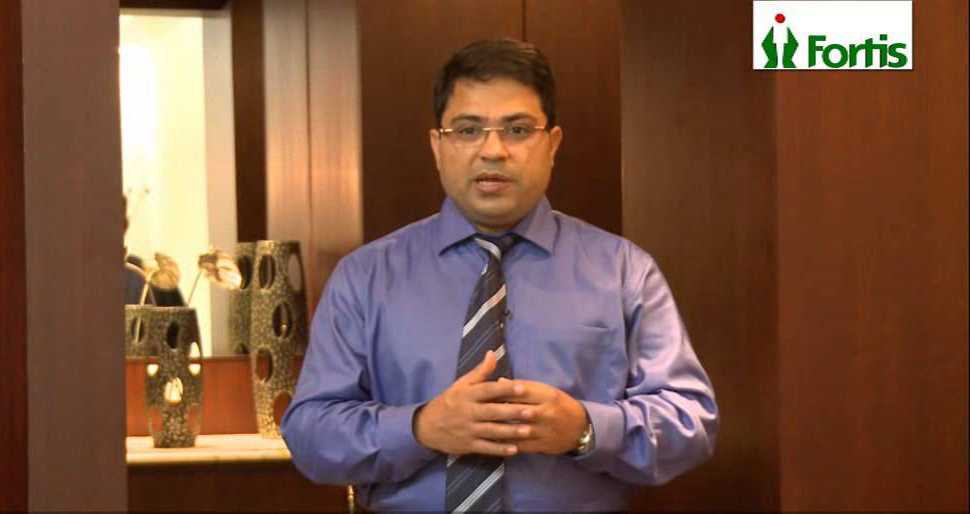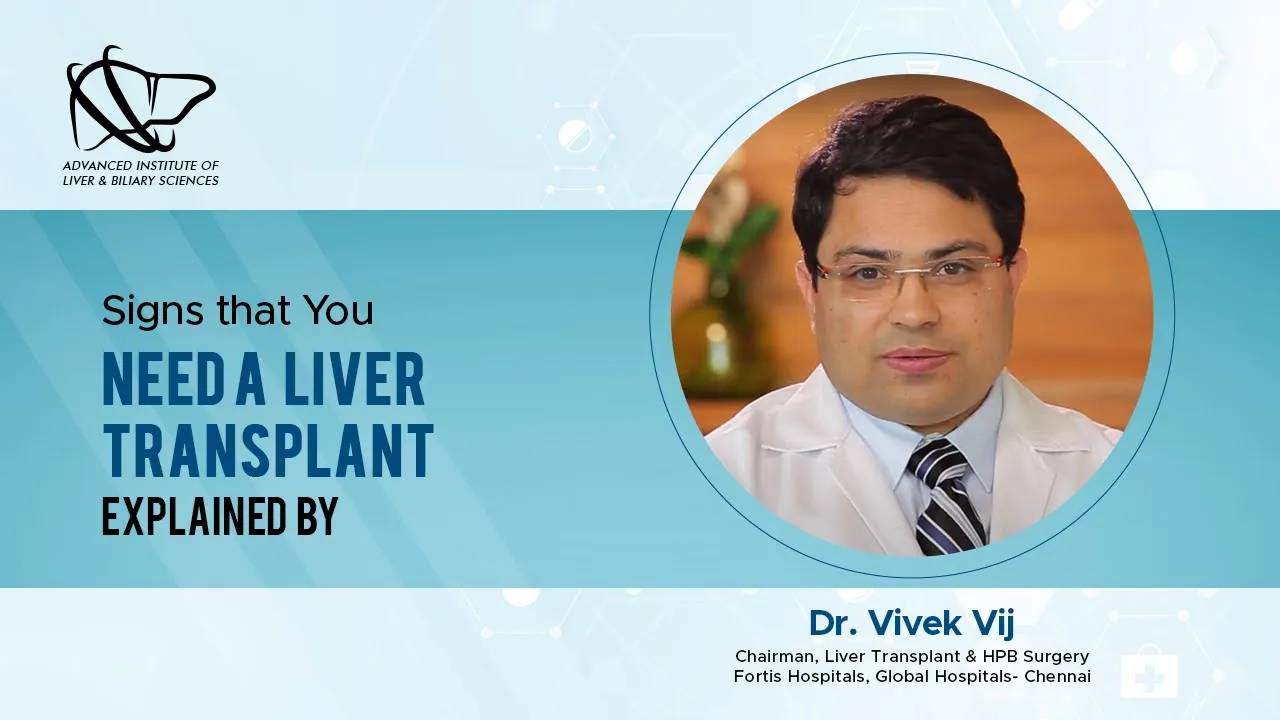
Fatty liver disease is a growing concern, once predominantly associated with adults, is now impacting younger populations, underscoring the urgent need for awareness, prevention, and effective treatment strategies. Fatty liver disease occurs when excess fat accumulates in liver cells, hindering the liver’s ability to function properly. Several factors contribute to its development in children, including obesity, an unhealthy diet rich in processed foods and sugars, lack of physical activity, and genetic reasons. Recognizing these factors is the first step in addressing and preventing the growth of fatty liver disease in children. This blog aims to shed light on this critical issue, equipping you with the knowledge and tools to combat fatty liver disease in children.

Fatty liver disease, once predominantly associated with adults, is now increasingly prevalent in pediatric populations. While the underlying causes can vary, certain risk factors play a significant role in its development. The causes of fatty liver in child include:
Obesity and Poor Dietary Habits: A diet high in saturated fats, sugary beverages, and processed foods can contribute to the accumulation of fat in the liver.
Sedentary Lifestyle: Lack of physical activity and excessive screen time can exacerbate the risk of fatty liver disease in children.
Genetic Predisposition: Some children may be genetically predisposed to developing fatty liver disease, making early intervention crucial.
Metabolic Disorders: Conditions such as type 2 diabetes, insulin resistance, and high cholesterol levels can increase the likelihood of fatty liver disease.
Prevention is undoubtedly the most effective strategy in combating fatty liver disease in children. By adopting a proactive approach and making positive lifestyle changes, parents can significantly reduce the risk and promote overall well-being. Here are some valuable tips for fatty liver disease prevention:
Encourage a Balanced and Nutritious Diet: Incorporate a variety of fruits, vegetables, lean proteins, and whole grains into your child’s meals, while limiting processed and fried foods.
Promote Regular Physical Activity: Engage your child in age-appropriate exercises, sports, or outdoor activities to maintain a healthy weight and improve overall fitness.
Monitor Screen Time: Limit sedentary activities, such as watching television or playing video games, to encourage active playtime and physical movement.
Regular Check-Ups: Schedule regular medical check-ups to monitor your child’s health and catch any potential issues early on.
If your child has been diagnosed with fatty liver disease, a comprehensive treatment plan is essential for managing the condition and preventing further complications. The following strategies may be recommended:
Dietary Modifications: Your child’s healthcare provider may recommend a specialized diet that focuses on reducing fat and calorie intake while providing essential nutrients for healthy growth and development.
Increased Physical Activity: Regular exercise can help manage weight, improve insulin sensitivity, and reduce the accumulation of fat in the liver.
Medication Management: In some cases, medications may be prescribed to manage underlying conditions contributing to fatty liver disease, such as diabetes or high cholesterol.
Liver Transplantation: In severe cases, where the liver has sustained significant damage, a liver transplant may be recommended as a life-saving measure.
Ongoing monitoring and aftercare are vital components of managing fatty liver disease. Regular check-ups with a healthcare provider, liver function tests, and lifestyle audits ensure the disease is kept at bay and allows for adjustments in treatment as needed.
Routine Health Evaluations: Regular health evaluations, including physical examinations and assessing growth and development, are essential.
Liver Function Tests: These tests provide valuable insights into the liver’s health, indicating if further adjustments to the treatment plan are necessary.
Lifestyle and Dietary Follow-ups: Aftercare is not just about medical tests; it involves continuous support and guidance on maintaining the lifestyle and dietary changes that are crucial in treating fatty liver disease.
Emotional and Psychological Support: Providing emotional support through counseling services or support groups can be invaluable for the child and the family, helping them navigate the challenges and changes that come with managing the condition.
Education on Disease Management: Understanding the condition, recognizing the signs of potential complications, and knowing when to seek medical help can make a significant difference in long-term outcomes.
Customized Monitoring Plans: This personalized approach ensures that monitoring frequency, dietary guidelines, and physical activity recommendations are tailored to support the child’s specific situation and progress.
In severe cases where fatty liver disease progresses to liver failure, a liver transplant may become necessary. Thanks to advancements in medical science, liver transplant success rate has been significantly improved, offering hope and a new lease on life for many children. Dr. Vivek Vij provides competitive liver transplant price in India while maintaining high standards of care. The best liver transplant surgeons in the world, including Dr. Vivek Vij, are dedicated to providing top-notch care and achieving outstanding outcomes for their patients.
Fatty liver disease in children is a growing concern, but with the right approach, it is preventable and treatable. By embracing healthy lifestyles, seeking early treatment, and relying on the expertise of specialists like Dr. Vivek Vij – the best liver transplant surgeon in the world, families can navigate this challenge successfully. Remember, the journey to recovery and prevention starts with informed choices and proactive care. Together, we can protect the liver health of our children, ensuring they grow up to lead vibrant, healthy lives.
What are the early signs of fatty liver disease in children?
Ans. Early signs can include fatigue, abdominal discomfort, or a feeling of fullness in the upper right side of the abdomen. However, many children may not show any symptoms, making regular check-ups important.
Can fatty liver disease in children be reversed?
Ans. Yes, with early intervention, including lifestyle changes and dietary adjustments, fatty liver disease can often be reversed, preventing long-term liver damage.
How often should children with fatty liver disease be monitored?
Ans. Children diagnosed with fatty liver disease should undergo regular monitoring, including liver function tests and check-ups, as recommended by their healthcare provider, typically every 6 to 12 months.
Is liver transplant a common treatment for children with fatty liver disease?
Ans. Liver transplant is considered a treatment option in severe cases where the disease progresses to liver failure. However, it’s more commonly a last resort after other treatments have been exhausted.


